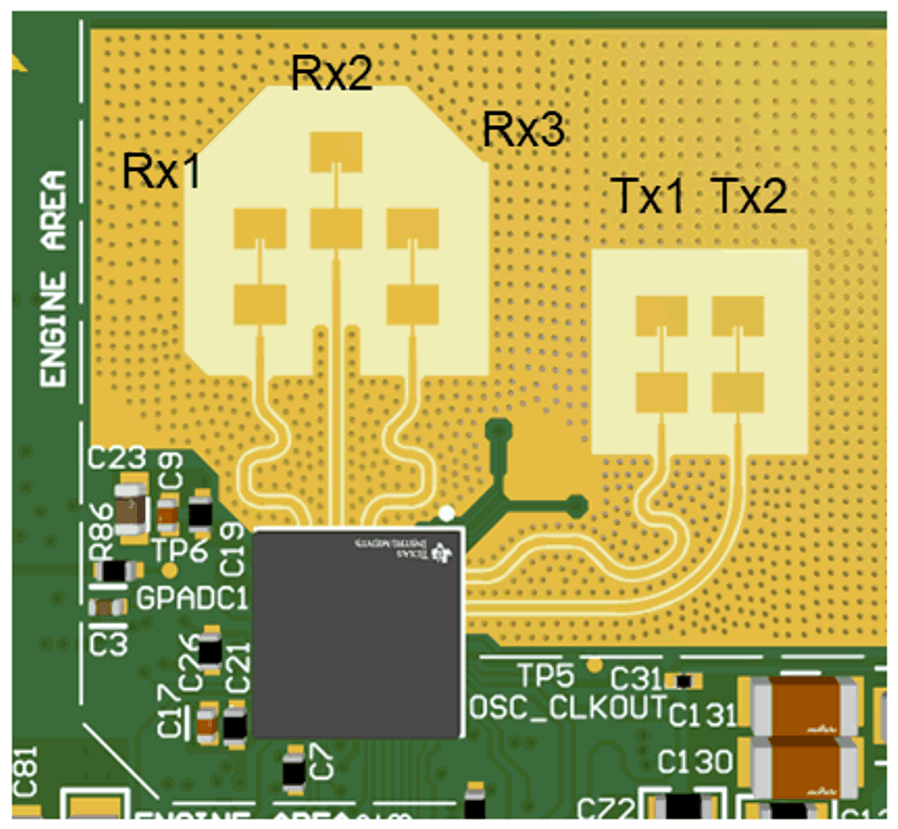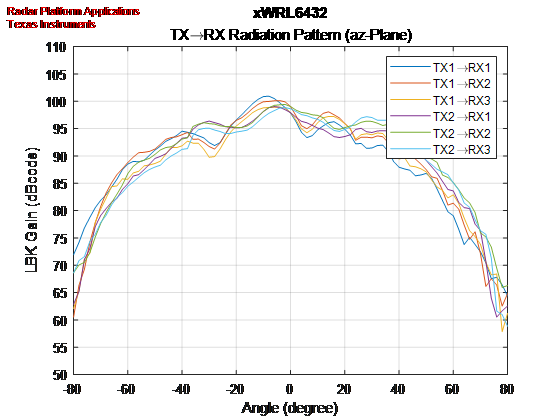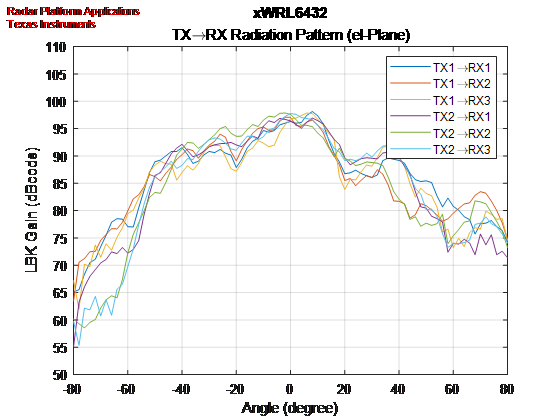TIDUF51 November 2023
- 1
- Description
- Resources
- Features
- Applications
- 6
- 1System Description
- 2System Overview
- 3Hardware, Software, Testing Requirements, and Test Results
- 4Design and Documentation Support
- 5About the Author
3.4.1 Radar Detect Distance Measurement
The IWRL6432FSPEVM utilizes the same FR4 based antennas on the PCB as the XWRL6432BOOST. These antennas include three receivers and two transmitters.

Figure 3-14 TX and RX Antennas of the EVM
Note: The XWRL6432BOOST has an antenna
gain of about 5–6 dBi across different antenna pairs.
The IWRL6432FSPEVM has same azimuth and elevation antenna radiation patterns as the XWRL6432BOOST.

Figure 3-15 Azimuth Antenna Radiation Patterns

Figure 3-16 Elevation Antenna Radiation Patterns
The results of the radar detect distance measurements are given in Table 3-2.
Table 3-2 Radar Detect Distance
| AZIMUTH ANGLE (DEGREE) | 0 | 30 | 60 |
|---|---|---|---|
| Motion localization example(1) | 9 m | 8 m | 5 m |
| Static localization example(1) | 10 m | 9 m | 6 m |
(1) No test beyond 10 m, due to test
environment limitation.